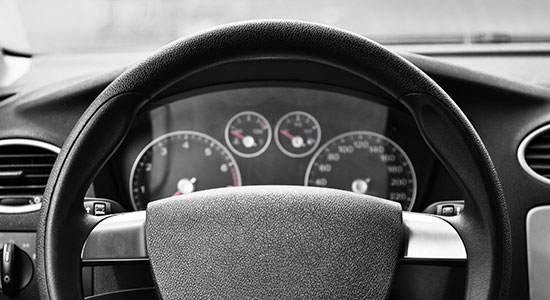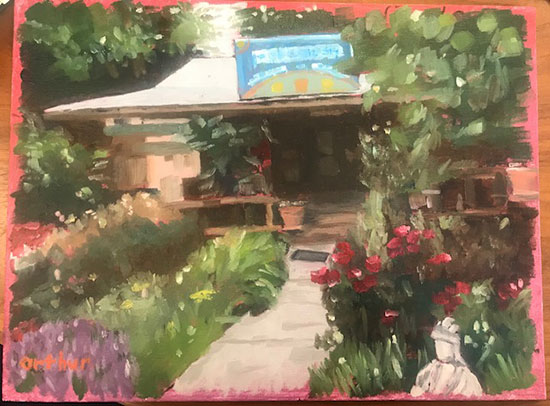
Once relegated to science fiction plotlines, autonomous vehicle (AV) technology is increasingly becoming a reality. Waymo, Google’s driverless car division, has clocked in nearly eight million self-driven miles; plans for a Waymo driverless taxi service are on the way.1 Ford has announced plans to start offering, beginning in 2021, vehicles for ride-hailing, as well as delivery services.2 General Motors’ self-driving division, GM Cruise, has stated that deployment of autonomous vehicles in major cities is “imminent.”3 Tesla’s Autopilot offers features such as lane centering, self-parking, and the ability to transition from one freeway to another when the user’s destination is nearby.4 There are six levels of automation designated by the U.S. Department of Transportation’s National Highway Traffic Safety Administration (NHTSA). See sidebar. Tesla’s Autopilot is classified as between levels 2 and 3.
Federal, state, and local governments, as well as private entities, have begun to critically analyze the emerging paradigm. Given federal developments, the siting in Wisconsin of one of 10 proving grounds for driverless cars and trucks by the U.S. Department of Transportation (U.S. DOT), and recommendations provided by the recently completed Governor’s Steering Committee on Autonomous and Connected Vehicle Testing and Deployment, Wisconsin lawyers should begin positioning themselves for legal work that will almost certainly develop as a result of this emerging technology.
While it is always a bit speculative to make any predictions, this article offers an overview of federal regulations on AVs, a review of recommendations from the Governor’s Steering Committee, and analysis of several areas for opportunities for Wisconsin lawyers resulting from the emergence of AVs on Wisconsin’s roadways.
Federal Regulation of Autonomous Vehicles
During 2018, the U.S. House and Senate passed the SELF Drive Act and the AV START Act, respectively.5 Although both bills have since died, federal agencies have provided guidance in this emerging space.6
In October 2018, the U.S. DOT released a proposed guidance called Preparing For the Future of Transportation: Automated Vehicles 3.0 (hereinafter AV3.0), which builds on a previously released version concerning AV safety and best practices at the federal, state, and local levels.7 The proposed document is the third iteration of the federal government’s voluntary guidelines on the development and safe deployment of AV technology. There are four significant changes to AV3.0 from previous versions.
-
AV3.0 provides new multimodal safety guidance.8 AV3.0 outlines how automation will be safely integrated across passenger vehicles, commercial vehicles, and on-road transit, as well as the roadways on which they operate.
-
In response to issues raised by stakeholders, AV3.0 clarifies policy and roles.9 Specifically, AV3.0 1) states that the U.S. DOT will interpret and, consistent with all applicable notice and comment requirements, expand the definitions of “driver” and “operator” to include AV technology; 2) clarifies that the U.S. DOT need not favor particular locations or pick winners and losers for AV testing; 3) urges states and localities to work to remove regulatory barriers; 4) affirms the U.S. DOT’s authority to establish motor vehicle safety standards that allow for innovative AV designs; 5) reaffirms the U.S. DOT’s reliance on a self-certification approach; and 6) clarifies that, rather than requiring a one-size-fits-all approach, the Federal Transit Administration will provide state transit agencies with tailored technical assistance as the latter develops an appropriate safety management system approach for automated transit bus systems.10
-
AV3.0 outlines how to work with the U.S. DOT as automation technology evolves.11 AV3.0 identifies opportunities for partnership and collaboration among the private sector, state and local agencies, and the U.S. DOT on issues ranging from accessibility to workforce development to cybersecurity.12
-
AV3.0 affirms that the U.S. DOT’s operating administrations are united in their commitment to safety.13 The U.S. DOT will be unified in pursuing strategies to successfully integrate automation technologies into the transportation systems.14
Wisconsin lawyers should be aware of the guiding principles of AV3.0, as Wisconsin, municipalities within Wisconsin, and Wisconsin stakeholders may adopt many of the suggested recommendations regarding AV technology.
Wisconsin Joins AV Development
Several states, including Wisconsin, have taken the initiative to study the effects of AVs. In January 2017, the U.S. DOT designated U.W.-Madison as one of 10 proving grounds for testing AVs.15 The Wisconsin AV Proving Grounds are hundreds of acres of roadways and crash-testing facilities operating at what was once a test track for American Motors vehicles, a four-mile racing track in Plymouth, the headquarters of Epic Systems in Verona, and the public streets connected to U.W.-Madison.16 The variety of locations available for the Wisconsin Proving Grounds will provide invaluable information regarding realistic traffic situations for AVs.
Meet Our Contributors
Why do you do what you do? What's the best advice you ever received? Share your weirdest courtroom story...
Lawyers have a lot to say. Our authors are no exception. Whether its personal, insightful, or fun, it’s always interesting.
Check out our Q&A with the author below
Additionally, then-Gov. Walker issued Executive Order #245 in May 2017 creating the AV steering committee.17 In June 2018, the committee released a final report regarding how best to advance the testing and operation of automated and connected vehicles in Wisconsin.18 The following recommendations were highlighted:
-
Wisconsin should identify the Wisconsin DOT as Wisconsin’s lead state agency to support connected or automated vehicle (CAV) testing and deployment, respond to emerging issues, and engage the public and business community on CAV topics.19
-
Wisconsin should create a working group with the ongoing responsibilities of responding to CAV technology and deployment, promoting CAV research development, providing policy advice, and coordinating the state’s response.20
-
The Wisconsin Legislature should generate and formally authorize a CAV testing framework that defines expectations for manufacturers that test AV technologies on Wisconsin’s public roads.21
-
When possible, Wisconsin should recognize and defer to released federal guidelines and reports regarding AVs.22
-
Wisconsin should support legislative and administrative efforts to update and clarify state statutes and administrative rules regarding CAV operation and liability.23
-
Wisconsin should promote the entire state as “Open for CAV deployment” and highlight current connected corridor projects.24
-
Wisconsin should highlight and pursue existing, near-term strategic partnerships while continuing to explore new strategic social, economic, and environmental partnerships through the creation of a CAV working group.25
Municipal Lawyers
Wisconsin will likely be the scene of early attempts by companies to road test AVs. Almost certainly, local residents who have safety concerns will exert pressure on their communities to regulate these vehicles when testing begins. Municipal lawyers will face issues of first impression for determining the best methods to regulate such vehicles.
In the absence of federal and state standards for regulating testing, cities that have already grappled with such local regulation are the best sources of information.26 For example, the National League of Cities has described a template for pilot testing of AVs on city roads.27 Another source of information is the guidance provided by the U.S. DOT in October 2018 about standards that should apply for local regulation of AV testing. An additional source of information includes the steering committee’s recommendations for regulating the testing of these vehicles on local streets.
This messy middle with semi-autonomous vehicles and cars operated by a driver coexisting creates very interesting liability challenges for the plaintiff and defense bars in accident cases.
Existing state regulations are based on the assumption that a driver is navigating the vehicle. In addition, there is a significant legal issue whether a municipality can exercise authority over the regulation of AV vehicles given the predominant role of the state in the establishment of “rules of the road” relating to the use of automobiles. Recent attempts by local governments to regulate the use of AVs on local streets have been marked by litigation.28
For all these reasons, municipal regulation of testing AVs on local streets will provide opportunities for Wisconsin lawyers who represent companies sponsoring the testing of AVs on local roads or municipalities attempting to regulate testing.
Tests of Autonomous Shuttles Set for Madison
American Family Insurance Co. will sponsor an autonomous shuttle that will run at the U.W.-Madison engineering campus on April 23-24, 2019, as a demonstration project.
American Family also will sponsor an autonomous shuttle that probably will run from the Spark Building (821 E. Washington Ave.) to the Capitol Square and back. Over the past few years, this increasingly popular area has already experienced parking issues with the addition of upscale apartments, stores, restaurants, and a large entertainment venue. The length of the stretch – about one mile – is considered ideal for this type of test.
This pilot is known as the Cap East Connector and is scheduled to begin service in fall 2019. The vehicle likely will be a 15-passenger, automated, electric bus. The project is a joint endeavor with U.W.-Madison’s Traffic Operations and Safety Laboratory, which is leading the effort to test the safety of and rider response to a driverless vehicle.
Accident Litigation
Existing liability standards must be modified, both in the short term, for an era that can be described as the “messy middle,” also known as the intersection of the AV world and the driver world, and eventually for a fully AV world.
Approximately 94 percent of all accidents are caused by driver error.29 In only 2-5 percent of the cases are there allegations that an automobile was defective or unreasonably unsafe.30
A difficult question is presented by the integration of AVs with traditional vehicles on the roadways. Consider the challenges of resolving legal liability for this near-term messy middle, represented today by the introduction of Tesla Navigate and the Cadillac Super Cruise AV driving systems.31 The technologies require only limited human intervention if certain risks arise, and both are already in use on Wisconsin roadways.
When accidents occur between an autonomous vehicle and a “driven” vehicle, what legal standards will apply to determine fault?
When accidents occur between an autonomous vehicle and a “driven” vehicle, what legal standards will apply to determine fault? A recent Arizona case involving a pedestrian who was struck and killed by an AV might be instructive. In that case, an investigation is ongoing to determine whether the following factors may have contributed to the fatality: the disabling of the emergency braking systems; the pedestrian crossing outside a designated crosswalk; and whether “the driver” was watching a streaming service at the time of the accident.32
This case illustrates how semi-autonomous vehicle technology still involves risk presented by human error and also highlights that semi-autonomous vehicle technology actually creates new dangers.33 Additionally, there are many new risks created by semi-autonomous vehicles, including overdependence on technology, insufficient warnings, deterioration of driving skills, and driver laziness.34 This messy middle with semi-autonomous vehicles and cars operated by a driver coexisting creates very interesting liability challenges for the plaintiff and defense bars in accident cases. This integration phase of AVs will create extraordinary opportunities for lawyers who practice in the personal injury arena.
The legal liability standards for the full AV world also will need to be adjusted. Currently, responsibility for an accident in Wisconsin is based on a shared-fault system. This means that each person involved in an accident can be held responsible for part of the liability and a plaintiff’s claim will be reduced by his or her share of liability.35 To recover damages from a particular defendant, a plaintiff must establish that the defendant’s fault exceeds that of the plaintiff.36
There are many new risks created by semi-autonomous vehicles, including overdependence on technology, insufficient warnings, deterioration of driving skills, and driver laziness.
However, in a fully AV world, when an accident occurs, the more likely reason for the accident will be faulty technology. In this situation, which standards will be applied to determine liability and damages? Will products liability law or something else take a more prominent role in determining liability?
Under products liability standards, such cases are generally divided into three categories: design defects, manufacturing defects, and failure to warn.37 There is significant concern from the automobile manufacturing sector that different state standards for products liability law will impede AV development.38 While products liability law offers some standards of liability for the fully AV world, the NHTSA has proposed establishing uniform national safety regulations that would apply and integrate with states’ tort law and insurance coverage solutions.39
In addition, some commentators have argued for a “reasonable computer” theory for establishing regulatory liability in the fully autonomous world as an alternative to conventional strict liability and product defects laws.40 Regulating the fully AV world for accidents will create significant opportunities for Wisconsin lawyers in the distant future.
Autonomous Vehicles: Six Levels of Automation
What is an autonomous vehicle? As vehicles vary in different levels of automation driving systems, the U.S. Department of Transportation’s
National Highway Traffic Safety Administration (NHTSA) categorizes vehicles as having one of six levels of automation:
| LEVELS OF AUTOMATION |
WHO DOES WHAT, WHEN |
| Level 0 |
The human driver does all the driving. |
| Level 1 |
An advanced driver assistance system (ADAS) on the vehicle can sometimes assist the human driver with either steering or braking/accelerating, but not both simultaneously. |
| Level 2 |
An advanced driver assistance system (ADAS) on the vehicle can itself actually control both steering and braking/accelerating simultaneously under some circumstances. The human driver must continue to pay full attention (“monitor the driving environment”) at all times and perform the rest of the driving task. |
| Level 3 |
An Automated Driving System (ADS) on the vehicle can itself perform all aspects of the driving task under some circumstances. In those circumstances, the human driver must be ready to take back control at any time when the ADS requests the human driver to do so. In all other circumstances, the human driver performs the driving task. |
| Level 4 |
An Automated Driving System (ADS) on the vehicle can itself perform all driving tasks and monitor the driving environment – essentially, do all the driving – in certain circumstances. The human need not pay attention in those circumstances. |
| Level 5 |
An Automated Driving System (ADS) on the vehicle can do all the driving in all circumstances. The human occupants are just passengers and need never be involved in driving.45 |
Source: Nevada Lawyer, October 2018, Reprinted with permission.
Roadway-related Technology and Contracts
Although the large-scale use of AVs in Wisconsin is many years away, road-related technology decisions associated with the use of AVs will begin to emerge much sooner. Municipalities, as well as the Wisconsin DOT, should consider the benefits of planning for the eventual introduction of AVs when designing transportation projects.
Recently, Wisconsin received a $160,000 grant from the federal government to install new infrastructure designed to accommodate AV technology in the I-94 corridor currently under construction in Racine County.41
More projects will consider such innovative infrastructure at the state and local levels. In particular, emerging vehicle-to-sign information technology will create demands for not only infrastructure but also contracts that will cover the installation and performance of such innovative infrastructure. These new emerging infrastructure requirements will create challenging contract review issues for Wisconsin lawyers at the state and local levels.
Zoning and Local Use Challenges
Zoning and land use laws also will be affected by AVs. In urban areas, decisions about long-term parking needs often are made as part of new development proposals. Frequently, these parking-space requirements are associated with not only surface parking but also single-purpose and very expensive multistory, dedicated parking structures.
Given the emergence of AVs, municipal officials should consider flexible long-term approaches when reviewing development projects. In particular, such decisions should include design and construction of parking structures that could have multiple future uses if demand eventually decreases for onsite parking. A number of commentators believe that fewer people will own vehicles and instead will rely on on-demand vehicles owned by centralized fleet operators such as Uber and Lyft.42 The city of Chandler, Ariz., is considering zoning changes that would reduce parking space based on the advent of AVs.43
There is significant concern from the automobile manufacturing sector that different state standards for products liability law will impede AV development.
Municipal lawyers involved in preparing master plans for long-term land use planning must consider legal implications of AV technology. The advent of Uber and Lyft has already resulted in greater use of existing roadways in central business districts. In response, many cities are beginning to regulate pick-up and drop-off locations for such vehicle services to reduce traffic congestion.44
The emergence of AV technology will increase the demand for zoning regulation to accommodate the future emergence of such vehicles and create unique opportunities for Wisconsin lawyers.
Conclusion
The brave new world of AV technology is coming soon to Wisconsin’s roads. Lawyers should stay abreast of standards and changes occurring in this space in order to begin positioning themselves for future legal work that will almost certainly develop as a result of this emerging technology.
Meet Our Contributors
How do you recharge your batteries?
 About six years ago, I took a painting course with my daughter, Emily. This course fueled a passion for painting. Every Saturday, I devote the afternoons to oil painting. It is the closest thing to yoga I know. It is a great stress reliever since I am “in the moment” when focusing on the canvas. I recommend taking a painting course. It will change your life!
About six years ago, I took a painting course with my daughter, Emily. This course fueled a passion for painting. Every Saturday, I devote the afternoons to oil painting. It is the closest thing to yoga I know. It is a great stress reliever since I am “in the moment” when focusing on the canvas. I recommend taking a painting course. It will change your life!
Arthur J. Harrington, Godfrey & Kahn S.C., Milwaukee.

How do you recharge your batteries?
 When I was about to leave for college, my mother, out of an abundance of concern that I would starve if I didn’t know how to cook, taught me some basics. This solid foundation has helped me cook new and increasingly complex recipes after work or on the weekends. I usually turn on a podcast, which helps me channel my creative energies into what I’m cooking at the moment. The process is zen, and my wife is happy I’ve cooked a meal at the end!
When I was about to leave for college, my mother, out of an abundance of concern that I would starve if I didn’t know how to cook, taught me some basics. This solid foundation has helped me cook new and increasingly complex recipes after work or on the weekends. I usually turn on a podcast, which helps me channel my creative energies into what I’m cooking at the moment. The process is zen, and my wife is happy I’ve cooked a meal at the end!
Stevin S. George, Sheppard, Mullin, Richter & Hampton LLP, Texas.
Become a contributor! Are you working on an interesting case? Have a practice tip to share? There are several ways to contribute to Wisconsin Lawyer. To discuss a topic idea, contact Managing Editor Karlé Lester at (800) 444-9404, ext. 6127, or email klester@wisbar.org. Check out our writing and submission guidelines.
Endnotes
1 Mashable, Don’t Believe the Naysayers: Self-Driving Cars Are Already Here in Many Ways.
2 Id.
3 Id.
4 Id.
5 National Conference of State Legislators, Self-Driving Vehicles Enacted Legislation.
6 T-U Automotive, AV Start is Dead, but Feds Have Given an Inch on Regulation.
7 U.S. DOT, Preparing for the Future of Transportation: Automated Vehicles 3.0.
8 Id.
9 Id.
10 Id.
11 Id.
12 Id.
13 Id.
14 Id.
15 U.S. Department of Transportation Designates 10 Automated Vehicle Proving Grounds to Encourage Testing of New Technologies.
16 U.W.-Madison News, Wisconsin Proving Ground Paves Way for Driverless Vehicle Research.
17 Report of the Governor’s Steering Committee on Autonomous and Connected Vehicle Testing and Deployment (June 29, 2018).
18 Id.
19 Id.
20 Id.
21 Id.
22 Id.
23 Id.
24 Id.
25 Id.
26 Autonomous Vehicle Pilots Across America; Cities Have Taken the Lead in Regulating Driverless Vehicles.
27 See Autonomous Vehicle Pilots Across America, supra note 26, at 13-15.
28 Uber in Legal Showdown With California Over Self-driving Cars; Pittsburgh Welcomed Uber’s Driverless Car Experiment. Not Anymore, N.Y. Times (May 21, 2017).
29 Santokh Singh, Critical Reasons for Crashes Investigated in the National Motor Vehicle Crash Causation Survey, Traffic Safety Facts Crash Stats. Report No. DOT HS 812 506 (March 2018).
30 What Causes Car Accidents?.
31 www.tesla.com/autopilot; www.cadillac.com/world-of-cadillac/innovation/super-cruise.
32 Report: Uber Driver Was Watching “The Voice” Moments Before the Fatal Tempe Crash.
33 Emergency Braking Was Disabled When Self-driving Uber Killed Woman, Report Says, N.Y. Times (May 24, 2018); Why Uber’s Self-driving Car Killed a Pedestrian, The Economist (May 29, 2018).
34 Keith Naughton, As Robots Take the Wheel, Driving Skills Begin to Hit the Skids, Bloomberg News Serv. (Aug. 10, 2017).
35 Wis. Stat. § 895.045(1).
36 State Farm Mut. Auto. Ins. v. Continental Cas. Co., 264 Wis. 493, 503, 59 N.W. 2d 425 (1953). See Fault and No Fault Accidents. Wisconsin has a comparative negligence system. See generally Wis. Stat. § 895.045; see also table at https://statelaws.findlaw.com/wisconsin-law/wisconsin-negligence-laws.html.
37 Restatement (Third) of Torts: Products Liability § 2 (Am. Law Inst. 1998).
38 Mark A Geistfeld, A Roadmap for Autonomous Vehicles: State Tort Liability, Automobile Insurance, and Federal Safety Regulation, 105 Cal L. Rev. 1611 (Dec. 2017).
39 Id. At 1676 n.246.
40 Ryan Abbott, The Reasonable Computer: Disrupting the Paradigm of Tort Liability, 86 Geo. Wash. L. Rev. 1 (2018).
41 U.S. Department of Transportation Proposes Nearly $1.5 Billion in INFRA Grants.
42 Univ. of Michigan, Michigan News, Evidence that Uber, Lyft Reduce Car Ownership (Aug. 10, 2017); Lyft Is Inspiring More People to Give Up Their Own Cars, Slate (Jan. 18. 2018).
43 Chandler Writes Self-driving Cars and Ride Sharing Into Its Zoning Code, Phoenix Bus. J. (April 27, 2018).
44 Do Uber, Lyft Worsen Seattle’s Traffic Congestion?, Seattle Times (March 8, 2017); Transportation Authority Says Uber And Lyft Make San Francisco Traffic Worse, Forbes (Nov. 4, 2018).
45 https://www.nhtsa.gov/technology-innovation/automated-vehicles-safety.
